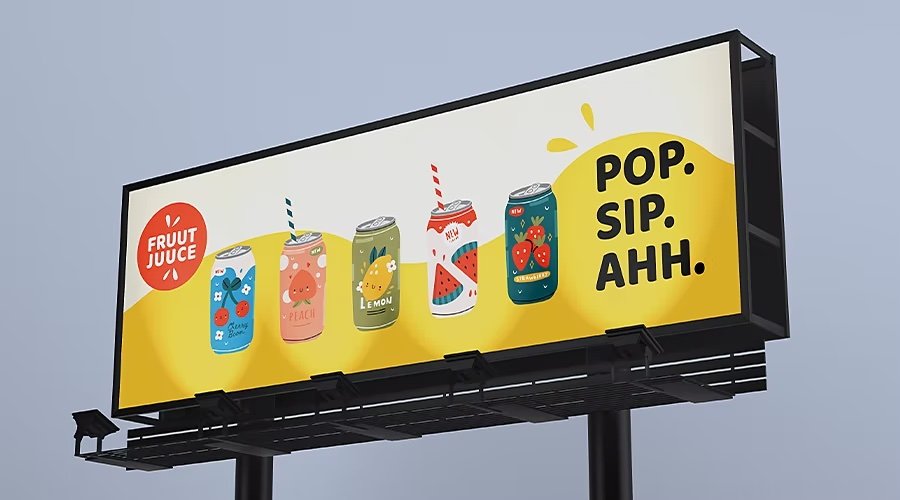Ad Copywriters Tips & Tricks
Image Courtesy: Adobe
In the ever-evolving world of digital advertising, mastering the art of persuasive writing is paramount. Ad copywriters play a vital role in shaping the perception of products and services, driving sales, and ultimately, ensuring the success of marketing campaigns. Let’s explore some invaluable tips and tricks to help ad copywriters create compelling and effective advertisements!
Tip #1: Know Your Audience
Understanding your target audience is the cornerstone of successful copywriting. Research your audience’s demographics, preferences, and pain points. Tailor your language and messaging to resonate with their needs and aspirations. Being aware of your audience can be achieved through proper research and communication. Surveys, checking the social media profiles of your followers, and contacting your strategist for input are examples of methods to discover your audiences’ wants and needs.
Furthermore, pick the right platform for your audience. For instance, B2B audiences are drawn to highly technical and long-form content; therefore, it is vital to invest in content marketing funnels that would appeal to these audiences.
Image Courtesy: Under Armor
Tip #2: Focus on Benefits, Not Features
Highlight the benefits of your product or service rather than just listing its features. Customers are more interested in knowing how your offering can solve their problems or enhance their lives. For instance, if you are selling a touchscreen computer, focus on the benefits of using a touchscreen (convenience, ease of use, speed of tasks, more abilities such as taking notes and graphic design, etc.) rather than focusing only on its features, such as the size or colors.
Tip #3: Craft a Compelling Headline
The headline is the first thing your audience sees. Make it captivating, concise, and impactful. A great headline piques viewers’ curiosity and entices them to learn more about your product or service. Furthermore, consider including numbers or statistics in your headline. Viewers want a headline that gets straight to the point, mentioning up-front how a product or service is cheap, likable, or useful.
Image Courtesy: Slack
Tip #4: Use Persuasive Language
Choose words that evoke emotion and persuade your audience to act. Emotional triggers create a connection with the audience, making them more receptive to your message. This principle is why titles with too much persuasion and emotion, called clickbait, can get so much attention. However, clickbait often annoys viewers and is misleading, and should be avoided. Similarly, positive emotional triggers, such as affirmation and humor, are highly effective at encouraging people to view your ad.
Tip #5: Include a Call to Action
Whether you include “Shop Now,” “Subscribe Today,” or “Get Your Free Trial,” a well-crafted call to action guides the audience to view your product or service. These phrases create a sense of urgency, compelling readers to take immediate action and increasing the likelihood of conversions.
Image Courtesy: Uber
Tip #6: Study Your Competition
To write a strong copy, you must study your competition. For instance, if your client sells makeup products, study their competitors, such as drug stores and high-end makeup brands at Sephora and Ulta. Figure out what sets your makeup brand apart from others, whether it is cheaper, more luxurious, longer-lasting, or has more customization.
Here are some questions to ask yourself when studying the competition:
What makes my product/service unique?
Is my product/service similar to my competition?
How do I differentiate my product/service from the competition?
Tip #7: Tell a Story
Narratives are powerful tools in advertising. Craft a compelling story around your product or service, making it relatable and engaging. Stories capture attention and leave a lasting impression. For example, the Skittles commercial “Everything You Touch” tells a story where a couple of office workers question their co-worker, who has the unusual ability to turn everything he touches into Skittles — which is played for comedy and tragedy at the same time. This Skittles commercial intrigues viewers with humor and emotional triggers and tells a story that’s easy for the viewer to enjoy.
Image Courtesy: Nike
Tip #8: Write an Elevator Pitch
Writing an elevator pitch is a great way to start brainstorming ideas for your advertisement. An elevator pitch encourages you to focus on the most important material of the product or service, such as a description, goal, and call to action. To add, elevator pitches provide an opportunity to express your product or service in a short and captivating way.
Tip #9: Be Concise and Clear
Avoid jargon and overly complex language. Be clear and concise in your communication. A straightforward message is easier to understand and more likely to convert.
Scenario 1: Imagine you are selling eco-friendly reusable water bottles.
Ad Campaign’s Tagline: “Hydrate Responsibly, Go Reusable!”
Ad Campaign’s Call to Action: “Join the movement! Shop now and make a difference.”
Scenario 2: Imagine you are selling an all-in-one home cleaning solution.
Ad Campaign’s Tagline: “Revolutionizing the Way You Clean!”
Ad Campaign’s Call to Action: “Discover the limitless possibilities of our revolutionary all-in-one home cleaning solution. Visit our website to explore the endless features and benefits that will change the way you clean forever!”
Scenario 1 has a straightforward message with a clear call to action. On the other hand, the call to action in Scenario 2 is overly complex and filled with jargon and technical details, making it less appealing and thus an ineffective ad campaign.
Tip #10: Stay Updated
The world of advertising is constantly evolving. Stay updated with the latest trends, techniques, and technologies in digital marketing. Adapting to new methods ensures your ad copy remains fresh and relevant.
Mastering the art of ad copywriting is a continuous journey of learning and adaptation. By following these tips and tricks, you will create ad copy that resonates with your audience and achieves exceptional results. Remember that your words have the power to influence and inspire, so use them wisely and creatively to make a difference in the world of advertising!
Samantha Genzer







